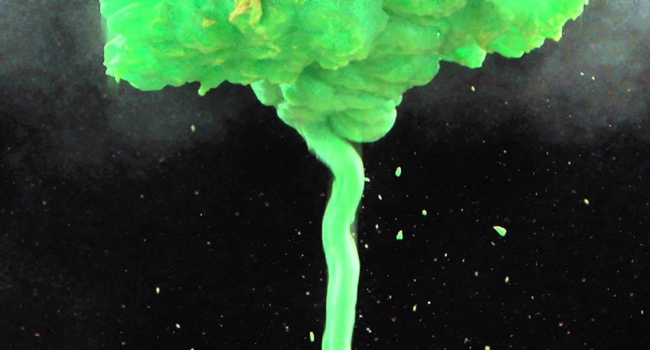5. The Zombies – Odessey & Oracle (1968)
 Fate conspired against the making, release and success of Odessey & Oracle. Recorded amid the acrimony of a band imploding, this was the Zombies’ first and last album. Their previous two LP’s; shoddily assembled singles collections issued without the band’s input, and sinfully excluding many of their finest B-sides, had sold poorly.
Fate conspired against the making, release and success of Odessey & Oracle. Recorded amid the acrimony of a band imploding, this was the Zombies’ first and last album. Their previous two LP’s; shoddily assembled singles collections issued without the band’s input, and sinfully excluding many of their finest B-sides, had sold poorly.
By 1967, after having been conspicuously absent from the Top 40 for over two years, the Zombies truly were the walking dead. They entered Abbey Road Studios in June of that year resigned to the fact that this would be their final record. It was the album of a fractious, defeated band with nothing to prove but plenty left to give, recorded on a meager budget provided by a label who’s indifference was so absolute that it didn’t even proofread the album art (no, the misspelling of “Odyssey” was not an intentionally trippy 60’s thing). It languished in the CBS vaults for nearly a year before Al Kooper, then an A&R rep for CBS, could persuade an unimpressed Clive Davis to even release it.
Despite the inclusion of the biggest hit of the Zombies career (“Time Of The Season”), Odyssey & Oracle, to nobody’s surprise, was a commercial and critical disappointment. Now widely considered one of the great, lost masterpieces of the psychedelic era, Odyssey & Oracle sounds timeless and ethereal. Awash with lush harmonies, florid piano, majestic mellotron, swirling organ and shimmering guitar, it is a chamber pop honey hole.
4. The Kinks – The Kinks Are The Village Green Preservation Society (1968)
 No band has ever waved the Union Jack so proudly. With the release of The Village Green, The Kinks gave us the quintessential English pop record. Wistfully nostalgic and dryly humorous, it had an almost cinematic quality. Both the title track and “Last Of The Steam Powered Trains” speak of clinging to the past. The ragtime meets spooky carnival musings of “Sitting By The Riverside,” the harpsichord primness of “Village Green” and the blithe sublimity of “Animal Farm” are all filled with rural yearning, while “Do You Remember Walter,” “People Take Pictures Of Each Other” and the sneaky bass and acoustic boogie of “Picture Book” make the album seem like a rock-opera about homesickness.
No band has ever waved the Union Jack so proudly. With the release of The Village Green, The Kinks gave us the quintessential English pop record. Wistfully nostalgic and dryly humorous, it had an almost cinematic quality. Both the title track and “Last Of The Steam Powered Trains” speak of clinging to the past. The ragtime meets spooky carnival musings of “Sitting By The Riverside,” the harpsichord primness of “Village Green” and the blithe sublimity of “Animal Farm” are all filled with rural yearning, while “Do You Remember Walter,” “People Take Pictures Of Each Other” and the sneaky bass and acoustic boogie of “Picture Book” make the album seem like a rock-opera about homesickness.
By no means as eclectic as The Beatle’s Sgt. Pepper’s Lonely Hearts Club Band, The Village Green Preservation Society wasn’t the record of a band out to change the world, just a friendly reminder to its listener of what was about to be left behind. Yielding no hit singles, it was considered a flop in America, faring only slightly better in the U.K., but it has, in recent years, outsold every other record the band has released. You can’t say it was ahead of its time, hell it may well have even been behind its time, but perfection has a way of outlasting the flavor of the day. As a songwriter, Ray Davies never rose to these heights again, but his descent was a gradual one, stopping at many interesting places on the way down.
3. The Beatles – Sgt Pepper’s Lonely Hearts Club Band (1967)
 If, as some have said, Revolver is the “Godfather” of pop music then Sgt. Pepper’s Lonely Hearts Club Band is, inarguably its “Citizen Kane;” brashly self-confident, startlingly innovative and eternally influential.
If, as some have said, Revolver is the “Godfather” of pop music then Sgt. Pepper’s Lonely Hearts Club Band is, inarguably its “Citizen Kane;” brashly self-confident, startlingly innovative and eternally influential.
Ensconced in the Abbey Road studios for, a then incomprehensible, 129 days, each band member accepted his role dutifully: George Harrison continued his dalliance with Vishnu on “Within You Without You,; John Lennon gleaned sardonic inspiration from newspaper headlines (“A Day In The Life”), circus posters (“Being For The Benefit Of Mr. Kite!”), a child’s (Yeah, right!) doodles (“Lucy In The Sky With Diamonds”) and breakfast cereal commercials (“Good Morning Good Morning”); Ringo Starr stood loyally by awaiting his assignments (playing the role of Billy Shears in the title track and its reprise) and Paul McCartney tried in vain to preserve the confluence of what began as his Edwardian music hall concept album.
Retrospectively regarded as the harbinger of the summer of love, it was the first Beatles record to cop to the rumor that the band was indeed … Gulp! … British! No longer content with pandering to American sensibilities, they instead provided us with a collection of short stories vacillating between the celebration and indictment of middle-class English life, laced with references of double-decker busses, the Albert Hall, the Isle Of Wight and, of course, cups of tea.
2. The Beatles – Rubber Soul (1965)
 Until December 3, 1965 rock ‘n’ roll was simply good time teenager music, wonderfully disposable and endearingly vapid. The British Invasion thus far had only served to shore up and repair, but not build upon this foundation. With the release of Rubber Soul, however, this would change forever. Lyrically influenced by Bob Dylan and newly awakened to the boundless potential of the studio, the band disregarded age-old wisdom by fixing something that wasn’t broken.
Until December 3, 1965 rock ‘n’ roll was simply good time teenager music, wonderfully disposable and endearingly vapid. The British Invasion thus far had only served to shore up and repair, but not build upon this foundation. With the release of Rubber Soul, however, this would change forever. Lyrically influenced by Bob Dylan and newly awakened to the boundless potential of the studio, the band disregarded age-old wisdom by fixing something that wasn’t broken.
Playing a musical game of chicken with producer George Martin, the Beatles pushed the pop envelope by introducing folk (“Norwegian Wood,” “I’m Looking Through You”), soul/gospel (“The Word”), country (“What Goes On”), chanson (“Michelle) and psychedelic elements. By affirming the heretofore-unprecedented axiom that a musical group should grow and evolve, the Beatles shed their mop-top chrysalis and elevated rock ‘n’ roll to its rightful place as an art form.
1. The Beatles – Revolver (1966)
 My favorite album of the British Invasion, the 60’s and all time, Revolver never grows old and never wears out. It serves as a bridge between the brown corduroy of Rubber Soul and the Technicolor silk of Sgt. Pepper’s Lonely Hearts Club Band. No longer the “four-headed” monster once described by Keith Richards, The Beatles had ceased to be a united front. They still supported one another, but from a distance, as each of the four spliced his own genetic code into every song he contributed. Informed by success, psychotropic drugs, Vedic and Buddhist theology and two years spent amongst that era’s glitterati gave them plenty to say.
My favorite album of the British Invasion, the 60’s and all time, Revolver never grows old and never wears out. It serves as a bridge between the brown corduroy of Rubber Soul and the Technicolor silk of Sgt. Pepper’s Lonely Hearts Club Band. No longer the “four-headed” monster once described by Keith Richards, The Beatles had ceased to be a united front. They still supported one another, but from a distance, as each of the four spliced his own genetic code into every song he contributed. Informed by success, psychotropic drugs, Vedic and Buddhist theology and two years spent amongst that era’s glitterati gave them plenty to say.
From the symphonic melancholia of “Eleanor Rigby” to the brass band, beer-hall sing-along playfulness of “Yellow Submarine,” this was the Beatles’ first real foray into eclecticism. George Harrison , contributing three songs to the set, dismissed the value of worldly things with the Hindustani inspired “Love You To,” only to grouse about having to part with his money in the propulsive opener, “Taxman.” Paul McCartney predictably enthused about love (“Here, There & Everywhere”), life (“Good Day Sunshine”) and that sweet, sweet cheeba (“Got To Get You Into My Life”). And John Lennon suffered fools poorly with three of his finest songs (“And Your Bird Can Sing”, “I’m Only Sleeping, and “She Said, She Said”), only to find transcendence in the albums finale, the Eastern mystery meets Western chemistry tour de force, “Tomorrow Never Knows.” Musically, diverse and brilliantly sequenced, Revolver never allows our attention to wane. It is an album to be explored and decoded, revealing, perhaps, more than its creators intended.



